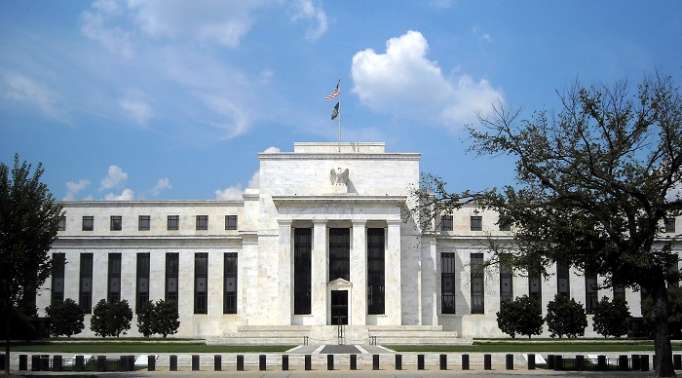This week’s two-day policy meeting could mark the formal end of the “accommodative” level of rates the Fed has used to support the American economy since the onset of the 2007-2009 recession.
The Fed’s current policy statement has included that description of loose policy as a staple element in recent years, though officials recently have described it as out of date and likely to be removed, either this week or in the near future.
The probability the Fed will raise its benchmark overnight lending rate by a quarter of a percentage point on Wednesday, in what would be its third hike this year, is nearly 95 percent, based on an analysis of fed fund futures contracts by CME Group.
The larger question is whether the Fed reshapes its monetary policy outlook for the next few years to factor in stronger GDP growth or whether concerns about a possible global trade war or economic slowdown cause it to stick close to its current view.
Gross domestic product grew at a 4.2 percent annualized rate in the second quarter, according to U.S. Commerce Department data released last month. The economy grew at a 2.2 percent pace in the first quarter.
Some analysts are expecting a more aggressive tilt, whether it comes in the policy statement due to be released at 2 p.m. EDT (1800 GMT), the accompanying economic and interest rate projections from policymakers, or Fed Chairman Jerome Powell’s press conference after the conclusion of the meeting.
“Financial markets should prepare for a more hawkish tone,” Natixis economists Joseph Lavorgna and Thomas Julien wrote ahead of the meeting.
“Another quarter of 4 percent real GDP growth coupled with faster wage gains will likely cause policymakers to err on the side of aggressiveness at some point ... Investors may soon have to contend with the fact that the Fed is going to press harder to dampen ebullient economic activity.”
MANAGING RISKS
In its last round of economic projections in June, the Fed forecast the economy would grow 2.8 percent this year, a figure several central bank officials have since publicly notched higher.
The unemployment rate, currently 3.9 percent, is at a level considered beyond what can be sustained without putting upward pressure on wages and inflation, and consumer confidence is strong, having hit an 18-year high in September.
In addition, equity markets have largely sloughed off the risk that the economy will be derailed by a global trade war.
Some Fed policymakers have said they feel a recent jump in U.S. wages is just the first of more to come.
Powell, who took over as head of the Fed earlier this year, has emphasized managing risks in a way that indicates he is more on guard about a possible jump in inflation than in trying to push unemployment rates ever lower.
Investment bank Goldman Sachs predicts the Fed will raise rates four times in 2019, faster than the three hikes suggested by policymakers in their projections in June or the two to three increases foreseen by investors.
The Fed’s benchmark overnight lending rate is currently set in a target range of between 1.75 percent and 2.00 percent.
“In light of the economy’s impressive growth momentum, the upward trends in wage and price inflation, and the limited overall tightening in financial conditions achieved so far, on net we think the risks to the funds rate are tilted to the upside,” Goldman Sachs economists Jan Hatzius and others wrote in a preview of this week’s Fed meeting.
More about: #FED
















































